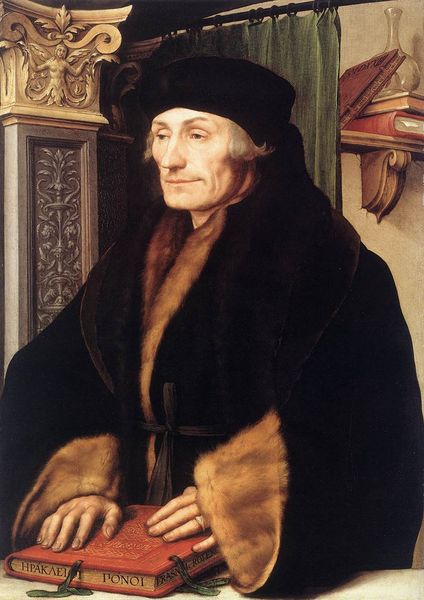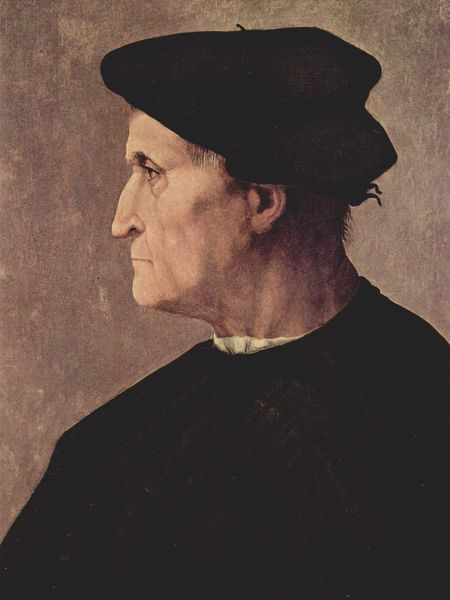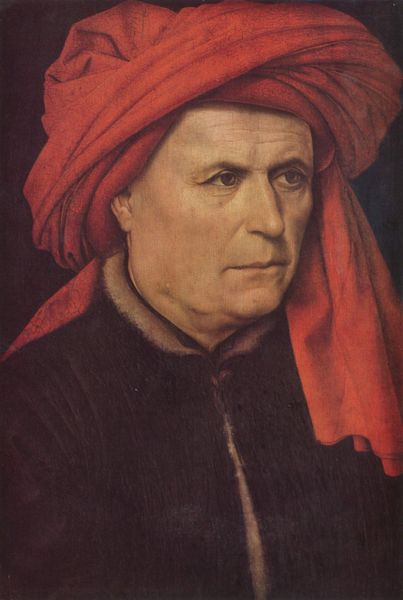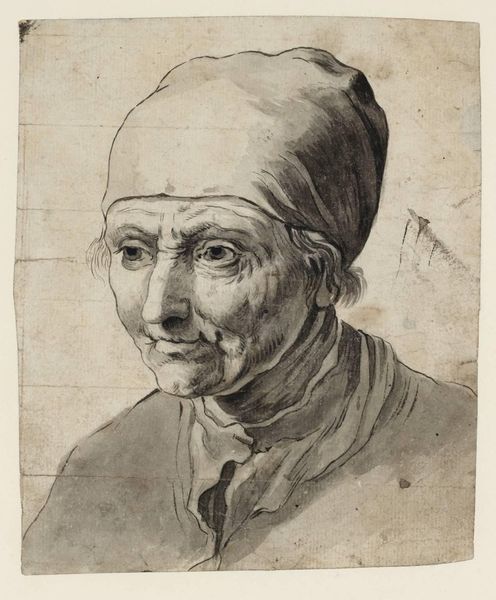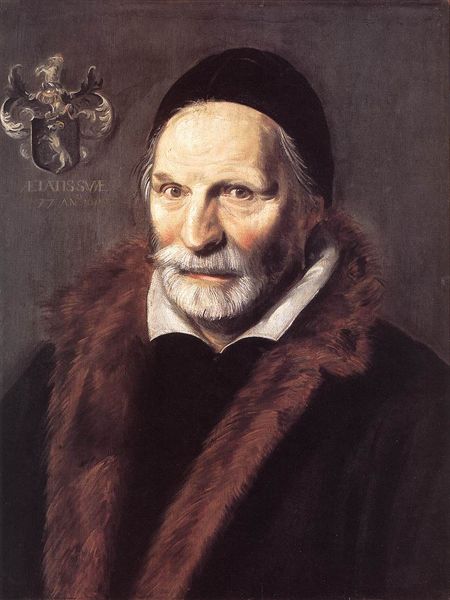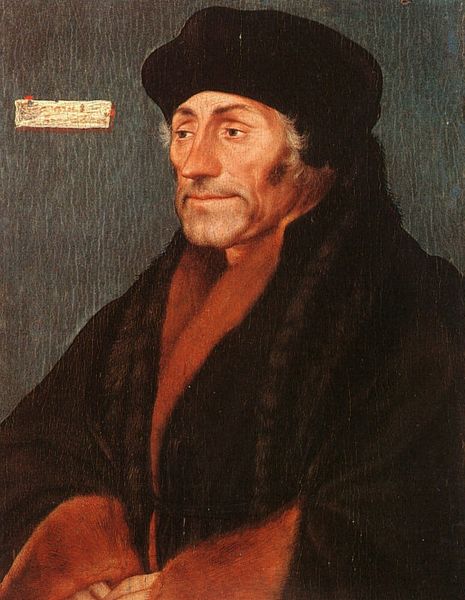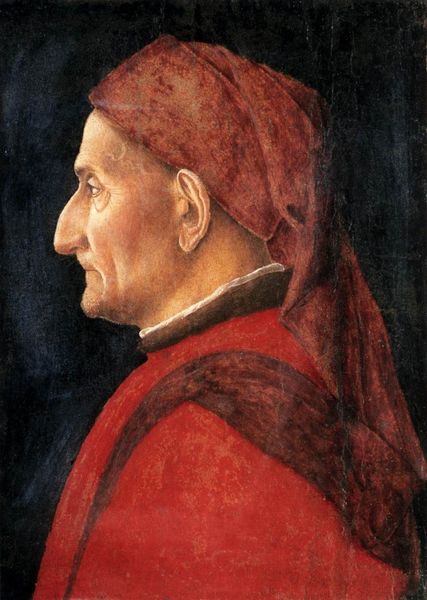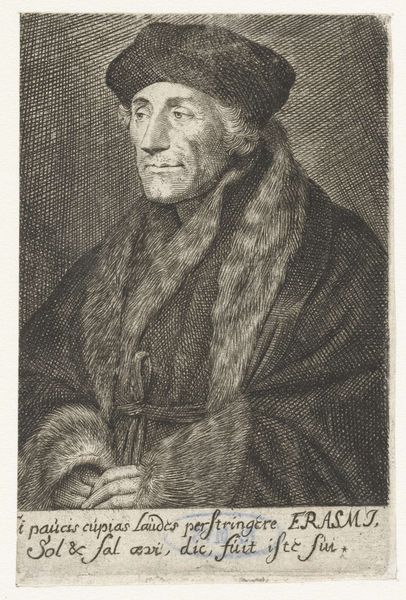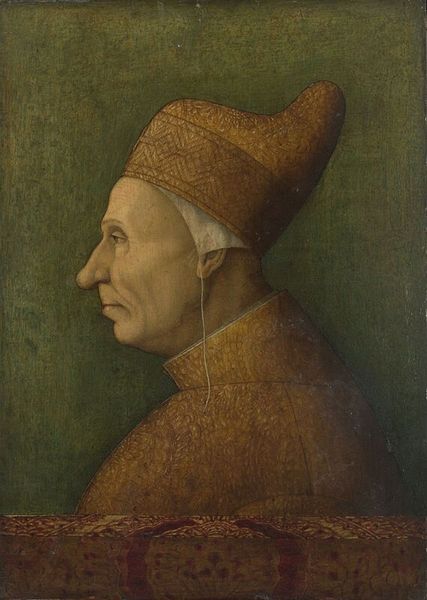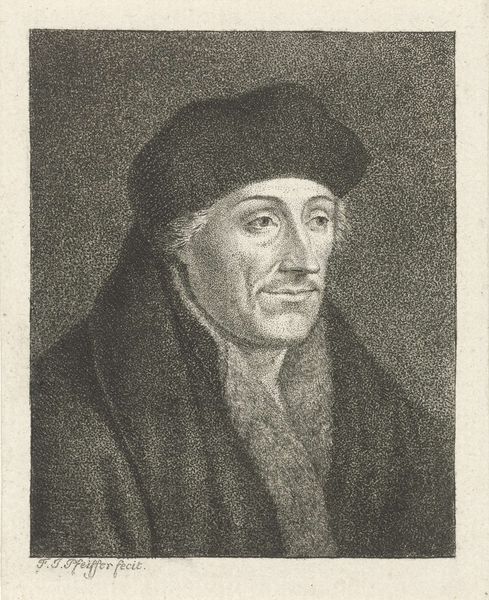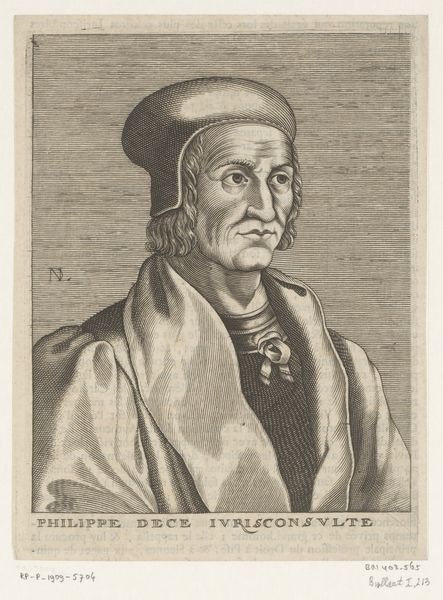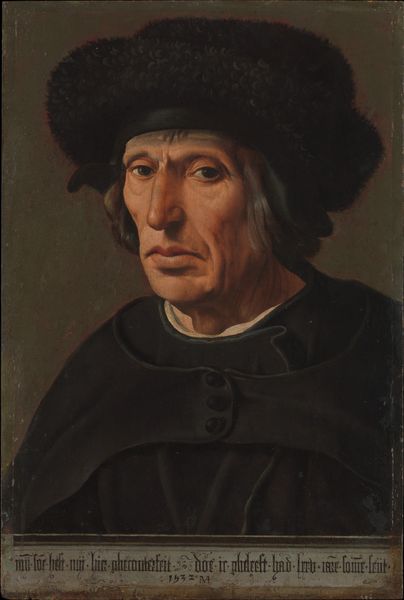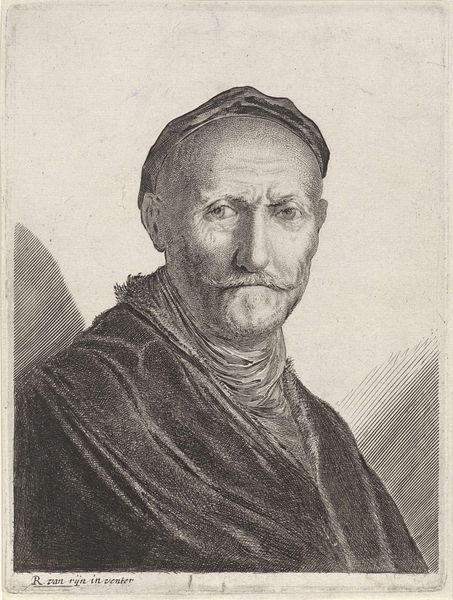
Portrait of Nuremberger Painter Michael Wolgemut 1516
0:00
0:00
painting, oil-paint
#
portrait
#
painting
#
oil-paint
#
figuration
#
11_renaissance
#
northern-renaissance
#
realism
Copyright: Public domain
Curator: Standing before us, we have Albrecht Dürer's "Portrait of Nuremberger Painter Michael Wolgemut," created in 1516 using oil paint. It resides here at the Germanisches Nationalmuseum. Editor: The intensity of his gaze grabs me immediately. There's such realism in the wrinkles and lines on his face – he seems to carry so much history within him. Curator: Absolutely. Dürer, even while celebrated as a master printmaker, painted many important portraits like this. Wolgemut was, in fact, Dürer's teacher. This painting, then, becomes more than just a likeness; it is a statement about artistic lineage and influence. Editor: I find that intriguing. What power dynamics were at play? Was Dürer attempting to assert himself, or pay respect to a figure who was about to be supplanted? The text in the upper right, too— what does it signify? Curator: The inscription commemorates the sitter. This practice reminds us of the Renaissance focus on individuality. As for the power dynamic, Dürer's homage becomes an acknowledgement of a changing world where craft guilds yielded to artists who had broader appeal outside local borders. Editor: Do you think there is any comment here about aging? Is Dürer drawing our attention to this master’s humanity, confronting us with something inescapable about the nature of being? Curator: Certainly. In the social context, a detailed portrayal such as this would signal the importance of this person to the Nuremburg community and underscore the value of experience and the dignity of labor at a time when the social hierarchy was becoming less rigid. Editor: Dürer uses light and shadow so effectively; the way it defines his face almost sculpturally. His turban draws me in as well, a bold symbol, like armor. It's so striking to me. Curator: Indeed. By rendering these details, Dürer places the older artist firmly within the burgeoning cultural, economic and political structures of Nuremberg in that pivotal moment. Editor: Seeing how this portrait captures a man’s spirit through Dürer's technical skill reveals how images communicate history, philosophy and feeling. Curator: Well said. Dürer was keenly attuned to portraying an individual and the social world around him with his unique form of realism.
Comments
No comments
Be the first to comment and join the conversation on the ultimate creative platform.
